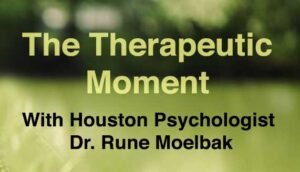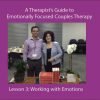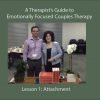“My partner doesn’t feel loved and is always angry and upset. It doesn’t make any sense because I love her and she should know that. So why is she acting as if I don’t? And how long am I supposed to just keep taking the abuse, the put downs, or the negativity? Sometimes it’s depressing to come home and I just prefer to stay a little longer at work. At other times I feel hopeless because it seems no matter what changes I try to make it never really seems to make a difference, at least not in the long run. She just keeps going back to being depressed or dissatisfied. Relationships shouldn’t be this hard… Maybe we are just not right for each other…”
- Average client in couples therapy
Have you ever found yourself thinking this way?
If not you are probably in the minority…
If you have, the good news is you are not alone. The main reason couples come to therapy is usually this: One person isn’t happy, is feeling depressed, or demands a change; the other person feels compelled to fix it or do something about it, but is at their wits end and don’t know what else to do. Both, of course, suffer because a relationship in distress is a problem for both people who are in it not just the one person who keeps complaining they are unhappy.
So Why Can’t These Problems Just Easily Be Fixed?
In this blog post I am going to give you one insight that you are almost certainly not aware of. Why not? Because you probably don’t quite know why the problem is really happening. You might have been thinking the problem is with your partner, or might have been afraid that the problem is really with you, but I am here to tell you the answer is a lot more complex.
The drivers of your distress is more than likely a lot more biological than either of you think and to understand why this is we need to go on a little journey into neurobiology…
The Neurobiology of Relationships in Distress:
To understand why your partner all of a sudden seems to feel unloved and is reacting “crazy”, irrational, or out of sorts, we need to first understand how people work.
Our brain takes in information through the thalamus which integrates all the sensory input we receive from the environment through our eyes and ears. This input then gets processed through our amygdala which decides what it all means by attaching emotion and relevance to the input. If danger or threat is detected by the amygdala an emergency response is triggered that activates stress hormones like adrenaline and shuts down the analytical part of our brain in favor of fight or flight survival actions. This whole process happens pre-consciously, so before we are even aware of what the danger is or capable of evaluating rationally what is going on, our body has already decided that something is a threat. If the stress response is too strong, our analytical brain won’t even have a chance to verify whether the initial emotional interpretation of danger is true, but once the initial stress response subsides, the analytical brain is once again accessible to us and might be able to reason that it was just a false alarm.
If the stress response keeps happening and our amygdala keeps alerting us to danger, however, it becomes ever more difficult for our analytical brain to argue otherwise.
Sure if I see a twig on the road and react with stress because I emotionally mistake it for a snake my analytical brain can easily dismiss it and allow me to go on with my day. But if every time your partner comes home late your body emotionally responds with a danger alert and releases stress hormones, how long can you keep explaining it away as just an over-reaction?
At some point the stress response begins to convince you or confuse you as to the true meaning of what is going on. Your emotional brain hijacks the analytical brain and begins to find confirmation for what you are feeling. “It must be true that there is danger if I continue to feel it, mustn’t it?” The analytical brain now looks for reasons why I feel so frightened. Now it tells me: “He comes home late because I don’t matter to him”, or “he is probably cheating”, or “when is the last time he put me first?”. My analytical thought process has now become paranoid and the person I love is now a person who puts me in danger, or can’t be trusted. To my amygdala he is the enemy.
Of course, the more my emotions trigger a danger response and activates my fight or flight system, the more I will end up acting in self-defense. The fight response means I will get angry and accuse my partner of this, that or the other or actively freeze him out to punish him. The flight response might mean I want to end the relationship. My freeze response might make me shut down or become distant. Or my please response might make me try extra hard to win him back over but then resent it later when I feel taken for granted.
The problem is that with each fear based response I probably trigger a similar fear based response in my partner. If I shut down once, it probably won’t be a big deal. My partner’s amygdala might still interpret it as danger, but will see it as an anomaly, and his analytical brain will be able to put it in context and not freak out.
However, over time, as my stress responses become more frequent, so will my partner’s, and my fight/flight/freeze/and appease responses will now be met with similar fear responses in my partner. Our relationship has now been turned into a relationship where we are both protecting ourselves from danger and interpreting the actions or inactions of each other from a paranoid or danger paradigm. Renowned couples therapist John Gottman calls this inclination to perceive input through this paranoid lens for negative sentiment override.
In other words, in the moment I focus on the interpretation that supports my amygdala’s emotional experience of danger (“she doesn’t like me”, “he is avoiding me”, “she no longer loves me”, “I don’t matter to him”) and ignore other input that doesn’t support this interpretation. My analytical brain simply isn’t “online” to provide any contradictory information, my stress response has made sure of that.
This of course is when couples typically come to therapy. They simply trigger each other left and right, and every which way they respond to each other simply triggers a danger and stress response in their partner. It is as if they are ping-ponging danger back and forth and triggering each other’s stress hormones and stress responses with every move they make
In emotionally focused couples therapy this can be illustrated through the heart diagram:

What the diagram shows is that the relationship now completely revolves around the amygdala’s frightened interpretations of each partner’s actions or omissions.
The stress response I feel in response to the perceived danger attached to what my partner says or does now leads me to tell myself a story that confirms my feeling and justifies or simply triggers a fight or flight reaction. But this then only serves to trigger the same kind of danger and fight or flight response in my partner.
No wonder then that couples often find themselves at their wits end about how to get out of this vicious cycle…
So What Can We Learn from This?
The basic insight is that when we build a life with someone we don’t just build a relationship with another human with the capacity to reason, put things into perspective, give grace, and so on. We enter into a relationship with someone who still has a reptilian and mammalian brain that they share with the rest of the animal kingdom. The survival mechanisms and stress responses that get triggered by perceptions of danger, and applies across the entire animal kingdom, also applies to us. Knowing this means that we need to take a different approach to what is happening and need to find ways to calm the overactive reptilian fight or flight brain.
To do this we must understand that danger to us humans does not only come in the form of physical threats, but also comes in the form of relationship threats.
In other words, to us humans, feeling emotionally safe is just as important as not starving, having shelter, and being out of physical harm. When our amygdala interprets threats to our relationship we release stress hormones just the same as we do if we are at risk of losing our life. Lack of feeling a connection to our partner can trigger an alarm similar to being mid air in a Boeing 747 when the flight-hatch comes off. Sometimes our amygdala gets it right and sometimes it’s just responding to a twig that looks like a snake, but the more often it activates a stress response, the more likely we will eventually start to believe it.
Danger Signals in Our Relationships:
What things can our amygdala interpret as danger signals in our relationship? The founder of emotionally focused couples therapy, Sue Johnson, has listed the following three threats to our secure attachment, also called A.R.E.:
- Accessibility: When I need my partner is he there for me? Can I call him if I have an emergency? Can I turn to him if I need to talk?
- Responsiveness: When I do turn to him is he helpful? Does he know what to say? Does he know me and what I really need? Can he comfort me?
- Engagement: Do I feel my partner’s love? Is he invested and passionate about me? Is he interested in me? Does he want to spend time with me?
Any action or omission can in a couple in distress be turned into a confirmation that the other person is not accessible, responsive, or engaged and therefore a danger to my emotional security. My husband not cleaning up after himself means that he doesn’t care about me (engagement) because he knows how important a clean house is to me; or it means that he doesn’t really know me or listen to what I tell him (responsiveness); or it means that he can’t be trusted or counted on because he is always distracted or absent-minded (accessibility).
Add to this hundreds of little other events that can prove my suspicion: coming home late from work, suggesting a vacation that isn’t to a place I want to go, never offering to cook, not providing feedback when I share about my day, never bringing me flowers, etc,. etc. In a relationship in distress anything and everything becomes a confirmation of the stress response of my danger prone amygdala.
How to Turn a Distressed Relationship Around:
The key insight about solving the kind of relationship distress that often gets both partners stuck in flight or fight responses is to realize that we are dealing with fear or danger, not selfishness, inadequacy, or ill intent. We are not bad people – just frightened people.
The name of the game is therefore not to pinpoint who is at fault, but to realize that we need to find ways to calm each other’s frightened amygdalas, decrease each other’s stress hormones, and bring back each other’s access to the analytical parts of our brains so we can see things more clearly again.
In other words: The name of the game is to find ways to reassure our frightened brains.
The comfort or reassurance the frightened brain needs can come both from our partner or from ourselves, or, ideally, both.
The challenge about getting reassurance from our partner is that this is most likely to be forthcoming when we don’t act or react based on our stress hormones, which almost ever only makes our partner recoil from us to protect themselves. In other words, my fear response tends to push my partner away, not bring them close, and this is exactly the opposite of what our frightened brain needs.
In the approach we call emotionally focused couples therapy we help couples get out of this dilemma so they can better help themselves and help each other. You can read a lot more about the ins and outs of this approach on my website and blog, but for now what I hope you will see is that the first step towards change is to understand the problem the right way.
Rather than seeing our partner through the eyes of our fear-filled stress response that paints him as the devil or makes her blame herself as too hard to love, understanding the problem through neurobiology gives us a different vantage point. We can now actually solve the underlying problem rather than take turns to put the blame on each other.

























